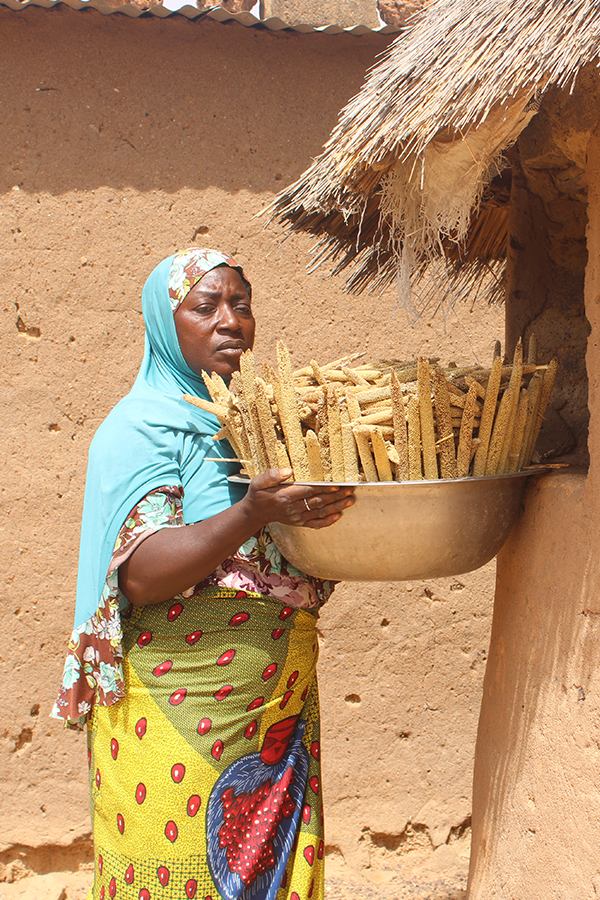
Mariam Kouanda has been producing millets since her early childhood. Not a rainy season has passed where she did not grow, she says. “I grew millets with my parents and I still produce them in my own household – it has become like a custom for us.”
Mariam lives in Bissiga Yarcé, a village near Ziniaré in Burkina Faso’s Central Plateau, about an hour’s drive north of the capital Ouagadougou. Like many areas in the country, the area is sandy and planting conditions here are dry and challenging most of the year.
“It is difficult to produce other crops on our lands, which are relatively poor,” she explains. “Fortunately, millets adapt very well and produce good yields, as long as you apply the right agricultural techniques.”
Before the start of the season, she prepares compost, raises the stone lines meant to limit flooding, traces the half-moons she dug to trap water and nutrients, and checks her zaï – little plant pits into which she will soon put her home-made fertilizer and the millet seeds she saved from last year’s harvest. They are easy-to-apply techniques she learned from a local farmers’ support organization called APIL (Action pour la Promotion des Initiatives Locales) and they have helped to increase her yield.
Mariam does not produce enough yet to market her grains, but the pearl millet and sorghum she grows allow her to eat well: “I can prepare a variety of dishes using millets,” she says, listing porridge, pancakes and tô, Burkina Faso’s go-to dough balls eaten with a variety of sauces. With good rainfall, she produces enough food to last her six months, until the next harvest.
For Mariam, every part of the millets is useful – even the stalks, which she uses to feed her animals and as fuel for her cooking stove.
Another big advantage of millets is that farmers can use peasant seeds for planting: traditional, non-modified seeds, adapted over centuries to the local climate. Crops grown this way will produce new seeds that farmers can plant again, share and trade. Many commercial crop seeds, on the other hand, are patented, can’t be shared and require farmers to buy new seeds each year.
Mariam fears the same might happen to millets, she says, and farmers could ultimately lose their rights to the crop. "That’s why people have to mobilize", she stresses, "to protect the ancient seeds and keep the genetic heritage in the hands of farmers". And that means she will keep storing, sharing and planting her own.
“The benefits of millets are immense,” she says. “As long as I have a field, I will always produce millets.”